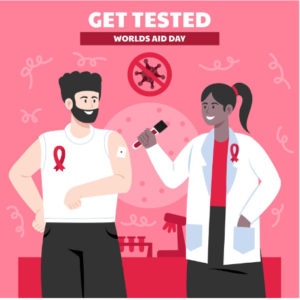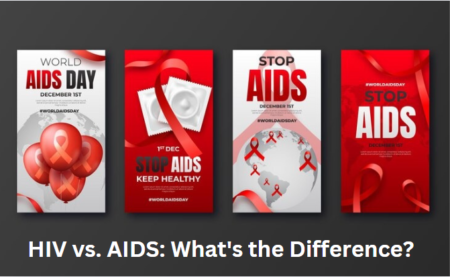Understanding the distinction between HIV and AIDS is crucial for anyone looking to educate themselves about these interconnected health issues. While both terms are often used interchangeably, they represent different stages and implications of the same viral infection. HIV, or Human Immunodeficiency Virus, is a virus that attacks the immune system, gradually impairing the body’s ability to fend off infections and diseases.
On the other hand, AIDS, or Acquired Immunodeficiency Syndrome, is the advanced stage of HIV infection, characterized by a severely weakened immune system and the presence of opportunistic infections. The journey from HIV to AIDS can take years, and with effective treatment, many individuals can manage their health and live fulfilling lives without ever reaching the AIDS stage. In this blog post, we will delve deeper into the nuances of HIV and AIDS, exploring their differences, symptoms, and the importance of early diagnosis and treatment in maintaining health and well-being.
What is HIV?
HIV, or Human Immunodeficiency Virus, is a sneaky intruder that targets the body’s immune system, specifically the CD4 cells. These cells are crucial in keeping us healthy by fighting off infections. Imagine your immune system as a fortress; HIV is the crafty invader that breaks down the walls, leaving you vulnerable. Once inside, the virus begins to replicate, making copies of itself. It’s a relentless process, gradually weakening your body’s defences. This is why early detection and treatment are so important.
The sooner you know about the infection, the quicker you can start battling it with antiretroviral therapy (ART). This treatment doesn’t cure HIV but keeps it in check, allowing many people to live long, healthy lives. HIV spreads primarily through blood, semen, vaginal fluids, and breast milk. It’s most commonly transmitted via unprotected sex, sharing needles, or from mother to child during childbirth or breastfeeding. Dispelling myths is vital; you can’t catch HIV through casual contact like hugging, shaking hands, or sharing food.

What is AIDS?
AIDS, or Acquired Immunodeficiency Syndrome, is the final stage of an HIV infection. Think of it as the endgame for the virus, where the immune system is so weakened that it struggles to fight off even the most straightforward infections. People with AIDS have critically low levels of CD4 cells, which are the immune system’s frontline soldiers. At this stage, the body becomes a battleground for opportunistic infections and cancers that a healthy immune system would typically fend off easily.
Without treatment, HIV progresses to AIDS in about a decade, but antiretroviral therapy can delay or even prevent this progression. Life expectancy drops significantly without intervention, but with modern medicine, many people with HIV never develop AIDS. This makes early detection and continuous treatment crucial. AIDS is not a separate virus but a dire consequence of untreated HIV, transforming a manageable condition into a life-threatening one.

Read more: Factors Contributing to Overweight and Obesity in 2024
Critical Facts about HIV and AIDS
Major Health Issue
HIV remains a significant global public health issue. It’s claimed over 42.3 million lives to date.
Global Transmission
Transmission continues worldwide, affecting every country.
Living with HIV
As of the end of 2023, 39.9 million people were living with HIV. Notably, 65% of these individuals are in the WHO African Region.
Annual Toll
In 2023, approximately 1.3 million people acquired HIV. Tragically, 630,000 people died from HIV-related causes.
No Cure Yet
There’s still no cure for HIV, but it is manageable with proper care and treatment.
Effective Management
With the proper treatment, people with HIV can lead long, healthy lives. Early diagnosis and continuous care are crucial.
Global Goals
WHO, the Global Fund, and UNAIDS aim to end the HIV epidemic by 2030, aligning with SDG target 3.3.
Ambitious Targets
By 2025, the goal is for 95% of people with HIV to know their status, 95% of those diagnosed to receive treatment, and 95% of those treated to achieve a suppressed viral load.
Current Statistics
In 2023, 86% of people with HIV knew their status, 77% were on antiretroviral therapy, and 72% had suppressed viral loads.
These facts underscore the ongoing challenge and hope in the fight against HIV and AIDS.
Signs and Symptoms of HIV
HIV symptoms can be as elusive as a chameleon, often changing with the infection stage. Many people don’t realise they’ve been infected in the initial weeks. Some might feel perfectly fine, while others may experience an illness that mimics the flu. Imagine waking up with a fever, headache, rash, or sore throat—these could be the first hints of HIV’s presence. As the infection progresses, the immune system weakens, allowing more symptoms to appear. Picture your body’s defence system struggling against invaders. Swollen lymph nodes, unexplained weight loss, persistent fever, and diarrhea become more common. A nagging cough might also show up, refusing to go away.
HIV doesn’t just sit quietly; it’s a relentless attacker. During these stages, the virus replicates, breaking down your immune defences bit by bit. Transitioning from feeling healthy to experiencing these symptoms can be sudden or gradual. It’s this variability that makes HIV particularly tricky to diagnose based solely on how one feels. Early detection is critical, and knowing these signs can help. If you ever experience these symptoms and think you might have been exposed to HIV, getting tested is crucial. Awareness is your best weapon against this sneaky intruder.
Progression from HIV to AIDS
The journey from HIV to AIDS is a gradual and relentless battle. Initially, HIV might be a silent infiltrator with few noticeable symptoms. However, as the virus chips away at the immune system, the body’s defences weaken, allowing more severe symptoms to emerge. Imagine living with a constant internal war. HIV targets and destroys CD4 cells, the very soldiers of your immune system. Over time, the relentless assault leads to a significant drop in CD4 cell counts. When this count falls below 200 cells per cubic millimetre, or when opportunistic infections like pneumonia or certain cancers take hold, the diagnosis shifts to AIDS.
Transitioning from HIV to AIDS isn’t immediate; it often takes around a decade without treatment. The body becomes a battlefield, struggling to fend off infections it once efficiently managed. Severe illnesses, weight loss, and persistent fevers mark this stage. The immune system is no longer a reliable guardian. Treatment can dramatically slow this progression. Antiretroviral therapy helps maintain higher CD4 counts, keeping the immune system robust. While the virus remains, its impact is significantly diminished. The earlier the intervention, the better the chances of staving off AIDS. The progression is a race against time, emphasizing the importance of early detection and consistent treatment.
HIV Treatment and Management
HIV treatment today is nothing short of a marvel. Antiretroviral therapy (ART) is the show’s star, dramatically transforming lives. These medications suppress the virus, keeping it at bay and allowing the immune system to recover and thrive. But it’s not a one-pill-fixes-all scenario. ART involves a daily regimen tailored to each individual’s unique needs.
Starting treatment as soon as possible is crucial. The earlier, the better, as it helps prevent the virus from causing irreparable damage. Once on ART, regular medical check-ups are vital to monitor the virus’s activity and the body’s response. Think of it as a dance; you must stay in sync with your healthcare provider to keep the rhythm smooth.
Medication adherence is non-negotiable. Missing doses can give the virus a chance to rebound, potentially leading to drug resistance. Picture it like a stubborn weed; it grows more robust if you don’t keep it in check. Hence, maintaining a strict medication schedule is essential.
Global Strategies to Combat HIV
Global strategies to combat HIV are a collaborative symphony of efforts from organizations like WHO, UNAIDS, and the Global Fund. These entities orchestrate a multi-faceted approach, blending prevention, treatment, and education to tackle the epidemic. One powerful strategy is scaling up access to antiretroviral therapy, ensuring life-saving medications reach those in need. This effort aims to suppress the virus, reducing transmission rates significantly.
Prevention campaigns are another critical element, focusing on high-risk populations. They promote safe practices, distribute condoms, and offer pre-exposure prophylaxis (PrEP) to prevent HIV acquisition. Public awareness initiatives work tirelessly to dismantle stigma, encouraging people to get tested and seek fear-free treatment. Education plays a vital role, too. Comprehensive sex education programs in schools and communities empower individuals with knowledge. They learn how to protect themselves and others, fostering a culture of prevention.
Innovative solutions, like mobile health clinics and telemedicine, bring services to remote areas. These approaches bridge gaps, making healthcare accessible to everyone, regardless of location. Additionally, research and development continue to push boundaries, exploring new treatments and potential vaccines. Collaboration with local governments ensures these strategies are culturally sensitive and effective. By aligning global goals with local realities, the fight against HIV becomes a united front.
What Does HIV Do to a Person?
HIV is a master of disguise, silently infiltrating your immune system. It targets CD4 cells, the body’s frontline defenders, and replicates—the virus multiplies, reducing your ability to fend off infections. Over time, this relentless assault weakens your immune system. Every day, illnesses become more challenging to fight. The sneaky virus turns your own body against you, making you more vulnerable.
As the infection progresses, symptoms intensify, including fever, weight loss, and chronic diarrhea. Without treatment, it’s a never-ending battle. HIV’s impact isn’t just physical; it’s emotional and psychological, too. The uncertainty and stigma can be heavy burdens. But with modern treatments, you can regain control. Antiretroviral therapy helps keep the virus in check, allowing you to live healthier.
Write down in the Q-A forms.
Q: Have questions about HIV or AIDS?
You’re not alone. It’s essential to seek accurate information. Use Q&A forms to clarify your doubts. Maybe you’re curious about symptoms or treatment options.
Q: Get your answers. Are you worried about how to support someone living with HIV?
The Q&A format can offer practical advice. Transitioning from HIV to AIDS can be confusing; your questions can help shed light on this process.
Q: Are global strategies to combat HIV effective?
Pose your queries. Need more certainty about statistics or recent advancements in treatment? The Q&A forms have you covered. This interactive approach ensures you receive personalized, accurate information.
